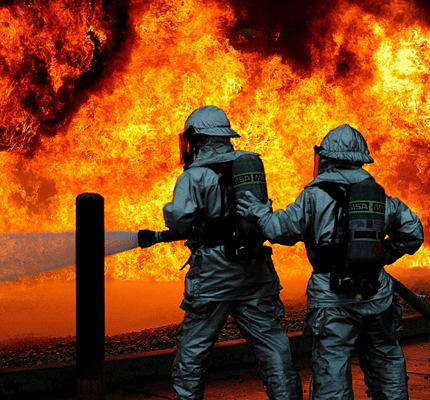
What Role Does Occupational Identity Play in Firefighters’ Response to Trauma?
While firefighters regularly experience traumatic events throughout their careers in service, little attention is paid to how they cope and make sense of the aftermath, whether in small groups or teams, or alone. As with their colleagues in other service professions—policing, the military, emergency medicine, etc.—firefighters are subject to the debilitating consequences of not adequately managing traumatic stress and tension. Such consequences may include increased likelihood of depression, alcohol and drug use, divorce, and contemplation of and attempted suicide.
In a new study in NCA’s Journal of Applied Communication Research, Brian K. Richardson and Eric P. James interviewed 27 members of a rural fire department (all men) in Texas to explore the challenges firefighters encounter as they cope with exposure to traumatic events, and how occupational identity plays a role in when and how to express emotion. Firefighters consistently “walk a tightrope as they experience societal and station expectations of their profession as heroic and indestructible though they routinely encounter emotionally damaging situations,” the authors note. Indeed, the idealized vision of firefighters heroically running into burning buildings and saving lives is juxtaposed with the disparate reality that includes emergency planning, tending to wounds, removing dead bodies, and providing emotional support for others. Yet it is the more masculinized and traditional view of firefighting that perpetuates a fear of emotional expression for firefighters themselves.
Firefighting: When Solving Problems Becomes Personal
Researchers asked study participants questions about how their impressions of their occupation had changed since becoming firefighters. Questions were primarily focused on the firefighters’ emotional investment and coping mechanisms. Respondents indicated that a “prime contributor of traumatic experience was their placement in situations that called them to do their jobs in stoic ways while simultaneously compelling them to related on an emotional level with elements of the scene.”

The participants said they became firefighters to help others and because they considered themselves good problem-solvers. But within this construct, the men must balance feeling and expression of emotion – which presents the biggest challenge in futile situations, especially ones involving children. “Not being able to help people like that kinda puts stress on you and makes you think about it longer than most calls you make,” said one participant. Another man said, “If you don’t take it personal I’m worried about you. I mean that’s, that’s part of the culture … of being a fireman.”
Traditional Coping Methods are Due for an Update
The study also examined the tensions created from the traditional firefighting culture, which values toughness, invulnerability, and emotional restraint, and an emerging culture among younger firefighters, which recognizes the necessity of discussing emotional trauma. The taboo on emotional expression is reinforced on calls that involve spectators, as firefighters put on a stoic front for the public as a fulfillment of cultural expectations. And, the authors say that “this practice of disciplining emotions at accident sites could carry over at the fire station, effectively muting certain forms of coping.”
When they do attempt to cope, many respondents say that it’s often through ironic, crude, or vulgar humor to relieve stress and affirm their identities within the crew. They minimally show support for each other with slaps on the back in times of distress, or with vaguely comforting statements such as “Man, that was a messed-up call.”
Some of the younger crew members in the study acknowledged a small shift toward openness and dealing with trauma, as well as some departmental efforts to recognize the early signs and symptoms of stress, burnout, and PTSD. However, veteran firefighters are quick to note the challenges of changing culture within an institution that is “3,000 years of tradition completely unhindered by progress.”
Training Opportunities and Recommendations
The authors suggest that before any major progress can be made within fire departments across the country, individual firefighters must explore their personal and professional identities, and determine the root of the tensions created by the intersections between them. Asking “Who am I?,” “Who am I perceived to be?,” and “Who should I be?” is a first step in identifying constructive ways to express emotion.
Fire department crews can also seek out alternative physical spaces to deal with stress and traum, so that they can more effectively separate their emotions from the “unique work-context and socialization processes of the fire station.” Perhaps even more significantly, the authors recommend that fire departments incorporate new forms of trauma management training into the physical and logistical training firefighters receive for their “problem-solving” responsibilities. The lack of training that focuses on emotional expression and trauma management creates what the authors call “blind spots” for fire departments, their crew members, and their families.
Ultimately, if fire department leaders act as role models for younger employees in establishing occupational identity and new norms, “what it means to be a ‘real firefighter’ can begin to transition to a new identity inclusive of constructive ways to discuss trauma.”



